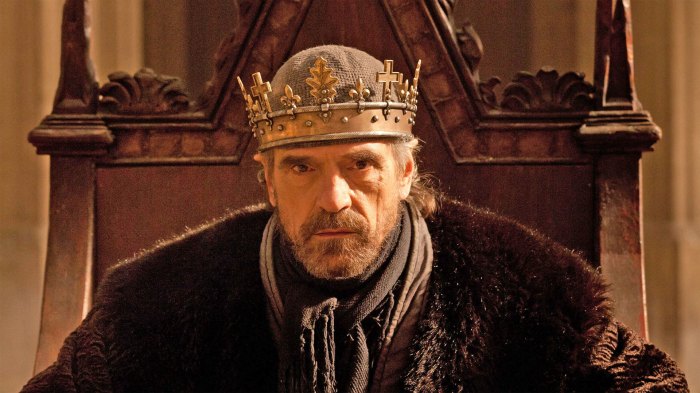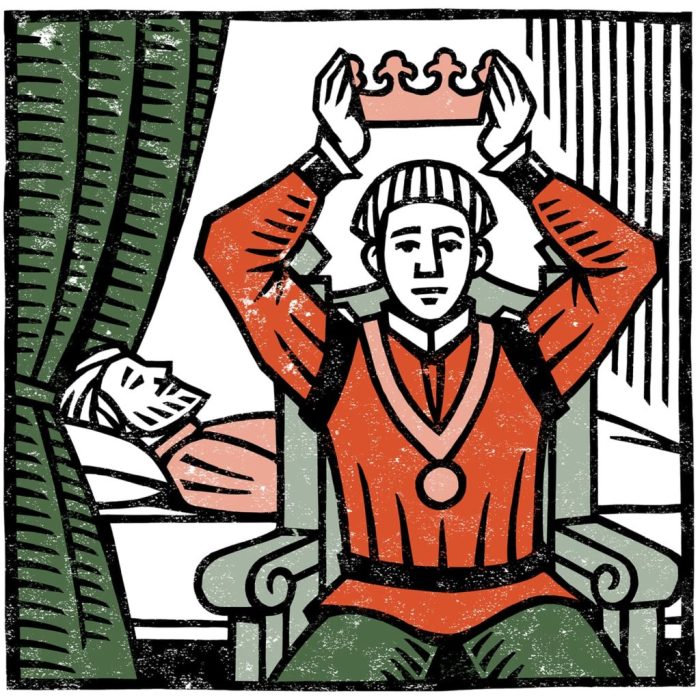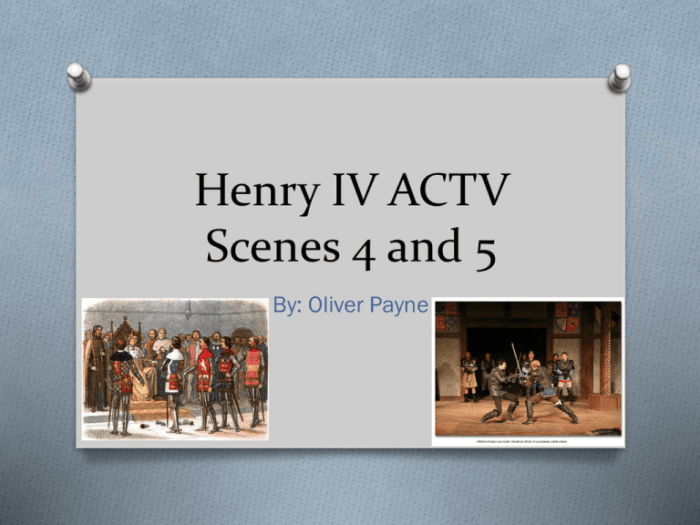Unveiling the intricacies of Henry IV Part 1 translation, this exploration delves into the play’s historical context, character dynamics, and literary nuances, offering a comprehensive understanding of this captivating work.
Delving into the heart of the play, we dissect the character of Henry IV, examining his motivations, relationships, and transformation throughout the narrative.
Historical Context

Henry IV, Part 1 is set during the reign of King Henry IV of England, who ruled from 1399 to 1413. This period in English history was marked by political instability and social unrest, as the country struggled to recover from the Hundred Years’ War and the Black Death.
The play reflects the political and social climate of its time, with its depiction of the power struggles within the English court and the growing discontent among the common people.
Political Context
- The play opens with the deposition of King Richard II by Henry Bolingbroke, who becomes Henry IV.
- Henry IV’s reign is plagued by rebellions, including the Percy Rebellion, which is the focus of the play.
- The play also explores the tensions between the English crown and the Welsh, who are led by the charismatic rebel leader, Owen Glendower.
Social Context
- The play depicts the growing gap between the rich and the poor, as well as the increasing resentment of the common people towards the ruling class.
- The play also explores the role of religion in society, with its depiction of the Lollard heresy, a religious movement that challenged the authority of the Catholic Church.
Cultural Significance
Henry IV, Part 1 is a significant play in English literature, as it is one of the first plays to focus on the life of a historical figure.
The play is also notable for its realistic portrayal of the political and social issues of its time, which makes it a valuable historical document.
Character Analysis

Henry IV, the protagonist of Shakespeare’s Henry IV, Part 1, is a complex and multifaceted character. He is a skilled politician and military leader, but he is also plagued by guilt and self-doubt.
Henry’s motivations are complex and often contradictory. He is driven by a desire for power and glory, but he is also aware of the moral implications of his actions. He is a loving father, but he is also a ruthless king.
He is a devout Christian, but he is also capable of great violence.
Henry’s relationships with others are equally complex. He has a close relationship with his son, Hal, but he is often disappointed by his son’s reckless behavior. He has a strained relationship with his wife, Queen Elizabeth, and he is often jealous of her affection for Hal.
Henry’s character undergoes a significant transformation throughout the play. He begins as a proud and confident king, but he gradually becomes more humble and self-aware. He learns to accept his own mortality and to forgive those who have wronged him.
Henry and Hal
Henry’s relationship with his son, Hal, is one of the most complex and fascinating in the play. Henry is a stern and demanding father, but he also loves Hal deeply. Hal, for his part, is a rebellious and irresponsible young man, but he also has a deep affection for his father.
The relationship between Henry and Hal is tested throughout the play. Henry is often frustrated by Hal’s behavior, but he never gives up on him. Hal, for his part, gradually comes to appreciate his father’s wisdom and strength.
By the end of the play, Henry and Hal have a much deeper understanding of each other. Henry has learned to accept Hal for who he is, and Hal has learned to respect his father’s authority.
Themes and Motifs

Henry IV, Part 1 delves into a tapestry of themes and motifs that shape its narrative and resonate deeply with the audience. These thematic threads are skillfully interwoven throughout the play, enriching its complexity and offering insights into human nature and the complexities of power.
Kingship and Legitimacy
The play grapples with the concept of kingship and the legitimacy of rule. King Henry IV, having usurped the throne from Richard II, struggles to assert his authority amidst doubts about his right to rule. This theme is explored through the character of Hotspur, who embodies the chivalric ideals of a true king and poses a significant threat to Henry’s power.
Honor and Reputation
Honor and reputation play a pivotal role in the play. Characters like Hotspur and Falstaff embody contrasting notions of honor. Hotspur’s unwavering pursuit of glory and his disdain for courtly intrigue contrast with Falstaff’s pragmatic approach to life and his willingness to compromise his reputation for personal gain.
Youth and Rebellion
The play explores the theme of youth and rebellion through the character of Prince Hal. Hal’s initial rejection of his royal responsibilities and his association with the dissolute Falstaff represent a form of rebellion against the expectations placed upon him.
However, as the play progresses, Hal’s transformation and embrace of his responsibilities reveal the complexities of youth and the challenges of navigating the transition to adulthood.
If you’re delving into the intricacies of Shakespeare’s Henry IV Part 1 translation, you might also find the legal precedent set in Coomer v Kansas City Royals an interesting read . This case highlights the complexities of contract law, but don’t worry, it won’t detract from your appreciation of Shakespeare’s literary genius when you return to the translation of Henry IV Part 1.
War and Violence
War and violence are pervasive themes in the play. The Battle of Shrewsbury serves as a backdrop for the exploration of the brutality and futility of conflict. Characters like Hotspur and Worcester represent the destructive forces of war, while King Henry’s desire for peace and reconciliation highlights the human cost of violence.
Language and Style: Henry Iv Part 1 Translation

Shakespeare’s Henry IV, Part 1is written in a rich and varied language that reflects the play’s diverse characters and settings. The language ranges from the elevated and poetic to the earthy and colloquial, and Shakespeare makes skillful use of figurative language, imagery, and symbolism to create a vivid and memorable world.
Figurative Language
Shakespeare employs a wide range of figurative language in Henry IV, Part 1, including metaphors, similes, personification, and hyperbole. These devices help to create vivid images and emphasize the play’s themes and characters. For example, in the opening scene, King Henry IV compares the rebellion against him to a “tempestuous wind” that “blows our bark” (I.i.1-2).
This metaphor suggests the power and danger of the rebellion, and it foreshadows the stormy events that will follow.
Imagery, Henry iv part 1 translation
Shakespeare also uses imagery to create a vivid and sensory experience for the audience. The play is full of vivid descriptions of people, places, and events. For example, in the scene where Falstaff and his companions rob the travelers, Shakespeare uses imagery to create a sense of chaos and confusion: “They roared so loud, and laughed so boisterously, that they might have awaked death if he had been asleep” (II.ii.34-35).
This imagery helps to convey the sense of disorder and revelry that characterizes Falstaff’s world.
Symbolism
Shakespeare also uses symbolism to create deeper meaning in the play. For example, the Boar’s Head Tavern, where Falstaff and his companions spend much of their time, can be seen as a symbol of rebellion and disorder. The tavern is a place where the rules of society are flouted, and it is here that Falstaff and his friends plot their schemes against the king.
The Boar’s Head Tavern is also a place where people from all walks of life come together, and it can be seen as a symbol of the diversity and complexity of English society.
Language and Style of Different Characters
The language and style of Henry IV, Part 1vary depending on the character who is speaking. King Henry IV speaks in a formal and elevated style, befitting his position as king. He often uses long, complex sentences and employs rhetorical devices such as alliteration and assonance.
Falstaff, on the other hand, speaks in a more colloquial and earthy style. He uses slang and colloquialisms, and he often makes jokes and puns. The contrast between the language and style of these two characters reflects their different personalities and social positions.
Adaptations and Translations

Henry IV, Part 1 has been adapted and translated into numerous languages and formats over the centuries. These adaptations range from stage productions to film adaptations to translations into different languages.
Different adapters and translators have taken different approaches to their work. Some have sought to remain faithful to the original text, while others have taken more liberties with the play, updating the language or setting or adding new characters or subplots.
Notable Adaptations and Translations
Some of the most notable adaptations of Henry IV, Part 1 include:
- William Shakespeare’s original text (1597)
- The 1944 film adaptation directed by Orson Welles
- The 1989 BBC television adaptation directed by Ron Daniels
- The 2012 stage adaptation by the Royal Shakespeare Company
These adaptations have all been praised for their faithfulness to the original text and their ability to bring the play to life for new audiences.
In addition to these stage and film adaptations, Henry IV, Part 1 has also been translated into numerous languages, including French, German, Spanish, and Russian. These translations have helped to spread the play’s popularity around the world and to make it accessible to audiences who do not speak English.
FAQ
What is the significance of the historical context in Henry IV Part 1?
The play’s historical setting provides a backdrop for the political and social conflicts that drive the plot, shaping the characters’ motivations and actions.
How does the character of Falstaff contribute to the play’s humor?
Falstaff’s witty banter and comedic antics provide a contrast to the play’s more serious themes, adding levity and entertainment to the narrative.
What are the key themes explored in Henry IV Part 1?
The play delves into themes of power, honor, rebellion, and the complexities of father-son relationships.
